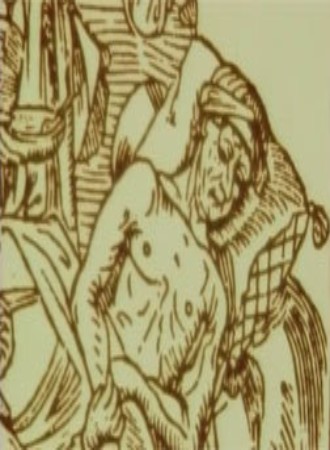
Fire and Fever: London 1665-66 1996
Distributed by Films Media Group, PO Box 2053, Princeton, New Jersey 08543-2053; 800-257-5126
Produced by Cromwell Productions
Directed by Graham Holloway
VHS, color, 53 min.
High School - Adult
History
Date Entered: 11/09/2018
Reviewed by Brad Eden, Ph.D., Head, Web and Digitization Services, University Libraries, University of Nevada, Las VegasFire and Fever: London 1665-66 is a historical dramatization of two of the largest disasters to hit London in the Renaissance period: 1) the bubonic plague of 1665, in which over 110,000 people died, close to one quarter to one third of London's population at the time, and 2) the great London fire of 1666, in which the entire city was destroyed. These two disasters are dealt with separately in the video. Part I deals with the bubonic plague and its effect on the citizenry of London in 1665. Period actors of Dr. Nathaniel Hodges and Daniel Defoe, contemporaries of the disaster, recite their recorded writings about the plague. Dramatizations of the plague's effect on the human body, of the filthy conditions in London during this time period, and explanations and theories regarding why the plague was happening are explained and examined. An interesting discussion of the outfit worn by plague doctors was enlightening and interesting, as was the fact that many infected people purposely tried to infect others who were not infected. The childhood game and song "Ring around the rosy" developed during this time period, and is actually a description of pneumonic plague.
Part II describes how the great fire of London started on September 2nd, 1666 in a bakery on Pudding Lane, and how it spread throughout the city until it eventually was contained and put out on September 5th, 1666. A discussion of the overcrowded situation in London after the plague epidemic, as well as the timber houses and their spacing are given as some of the reasons why the fire spread so quickly and rapidly. An actor portraying Samuel Pepys reading from his diary, written from 1660-69, provides dramatic proof that local officials did nothing to stop the fire for almost two days, thinking that it would eventually burn itself out. Eventually King Charles II took charge of putting out the fire, by setting up fire brigades. 13,200 houses, 87 parish churches, 6 chapels, 3 city gates, and 4 stone bridges were destroyed by the fire. Over 10 million pounds of damage were recorded (in a city with an annual income of 12 thousand pounds a year).
I highly recommend this video. The reading of contemporary accounts of these disasters in period costume and scenery was wonderful, and there is currently very little multimedia materials available for use in any classroom situation for these types of medieval/Renaissance disaster situations. I found these dramatizations highly informative and tastefully portrayed. The plague's effect on medieval and Renaissance Europe at various historical stages was dramatic on the economic, political, and artistic life, and this video provides an excellent starting point for understanding the perception of contemporary people regarding the plague. Part II also shows the effects of political inefficiency in the face of a major disaster in the making, and the devastating effect that fire had in the wooden environment of most major European cities in the medieval/Renaissance period.